Warehousing is the process of storing physical inventory for sale or distribution. Order fulfillment is the process of a warehouse receiving, packing, and shipping orders. The process begins when a customer purchases a product and ends when they receive the product. Order fulfillment is an essential component of any business, eCommerce or brick-and-mortar. With order fulfillment comes warehousing, and within warehousing are several elements that make up order fulfillment. Each element will come with warehouse handling charges.
In this article, we will break down the warehousing services pricing of an example third-party logistics company or 3PL. Since the 3PL is the third party that outsourcing businesses go to for warehousing, inventory management, order fulfillment, and many other services, this guide to warehousing costs will attempt to provide helpful information in understanding warehousing services pricing and what that pricing is based upon.
Third-party logistics providers serve as the operational arm of many brands and merchants, from eCommerce companies to boutiques to huge chain stores. They provide warehousing storage and all associated services: order fulfillment, shipping, inventory management, and value-added services such as kitting, bundling, and returns processing. The fulfillment company will handle customer services and business processing as well. Your distribution-based 3PL will store a client’s products, receive their orders, complete their process, whatever it requires, and ship their products to the customer.
We will look into the costs, referred to in this article as warehouse expenses. With such a variety of services, companies looking for the right 3PL partner find themselves with a tedious task. This is complicated even further by customized fulfillment pricing. Warehouse cost options will vary from 3PL to 3PL, making comparison pricing difficult.
How do you calculate warehousing costs? The answer isn’t as simple as a brand or a merchant would hope because pricing is based on many determining factors. And, more importantly, pricing is dependent upon the needs of the business. A more answerable question would be, what are the different types of warehouse costs? Once we understand the different types of costs, we can determine how to calculate them.
OK, then what are the key elements of warehousing cost? The key elements are listed in this article. When onboarding with an order fulfillment company, a significant amount of work and labor is needed on the 3PL’s part and the client’s part. To provide it, there are nine determining factors, explained in further detail below.
Getting into the details, the first question asked is about fixed costs… What are fixed costs in warehousing? As you will see in the breakdown that follows there are some fixed costs in warehousing, but the answer is always going to be, it depends on your needs.
Here below is a listing of nine different areas in which costs are calculated:
As you can see, the question of how much will be charged for storage and handling in warehousing depends for the most part on the fulfillment company and the client’s needs. As to the details, there is one source that has been researched and offers some insight.
Warehousing and Fulfillment did the research and the following data is considered a reasonable estimate of prices in 2021:
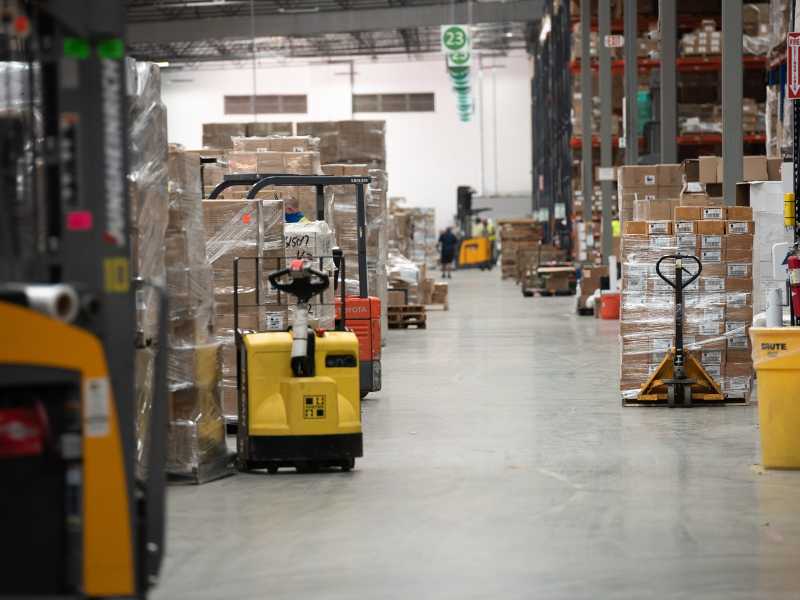 We will be going over the nine areas of operating costs and cover some of the questions and areas where the client’s needs do determine the costs. For example, what are the locations of the fulfillment company warehouses and offices? It matters because, with some clients, customers are located in one region, and locating closer to customers will reduce shipping time. Also, will there be international shipping? Some fulfillment companies do not support international shipping, so that is a question of concern.
We will be going over the nine areas of operating costs and cover some of the questions and areas where the client’s needs do determine the costs. For example, what are the locations of the fulfillment company warehouses and offices? It matters because, with some clients, customers are located in one region, and locating closer to customers will reduce shipping time. Also, will there be international shipping? Some fulfillment companies do not support international shipping, so that is a question of concern.
Does the client company like to offer customers free shipping or two-day shipping? That will affect costs. What quantity of goods does the client company need to keep on hand in the warehouse? What does the client company need concerning customization, storage, packaging, kitting, returns, and repair? Is there a need for temperature control? Is the client’s technology of the type that is easily integrated with the fulfillment company technology?
We begin with the questions of the clients’ inventory size, shipping requirements, preferred location, technology, and so forth, as answering these questions will determine if the fulfillment company in question is a candidate for the client’s business.
The first thing a fulfillment company will do for the client is receive the products in the warehouse. When the products arrive, the fulfillment company will inspect for damage, validate the item counts, inspect for any shortages, and if the client prefers, they will provide carton labeling services. Accuracy in the receiving process is critical for the client and the fulfillment company, and inspection and validation of the count will be done.
We listed above a square foot price of $7.91 for warehouse space in 2021. This may or may not be the cost at our example fulfillment company, but it is a usable estimate. Warehouse space, as with most things, is becoming more expensive. The client needs to consult with the fulfillment company as to how much product should be on hand, and where should the product be located. The location in the warehouse is important concerning cost. Products are moved when needed to make them available for picking, packaging, and shipping services.
Inventory accuracy is vital, and the technology should inform both the client and the fulfillment company as to where the product is located in the facility. Clients need to be able to track what products are selling to keep the inventory levels at the optimum level for cost saving and efficiency. The fulfillment company should have an experienced in-house IT team to handle the integration of systems.
The warehousing and fulfillment process starts with the 3PL receiving inbound products from the client. There are options in billing for receiving. The options could be billed by carton, billed by unit, billed by pallet, container, or warehousing rates could be billed hourly. The differences could be related to whether the client is a B2B (business to business) or a B2C (business to consumer) client. Inbound warehouse fees for B2C are usually hourly, but as with most things, it depends on the services needed by the client.
The fulfillment company will look for discrepancies, making sure to detail the condition of what is being received. They will take note of whether any inventory is damaged, whether the factory seal is broken, and so forth. The fulfillment company will submit to the client a detailed discrepancy report. The billing for receiving will vary from fulfillment company to fulfillment company, and the client should get a thorough understanding of what is involved in the receiving process and how it will be billed.
As we stated previously, our research has shown a 2021 cost per square foot of warehouse space at $7.91. The article also states that the average storage fee per cubic foot per month is $.495; the average pallet storage fee per square foot per month is $.77 and the average pallet storage fee per bin per month is $3.30.
This information may or may not be helpful to clients searching for cost information. The fees including the amount of square footage, the SKU count, the items per carton, and carton dimensions are charged based on square footage. 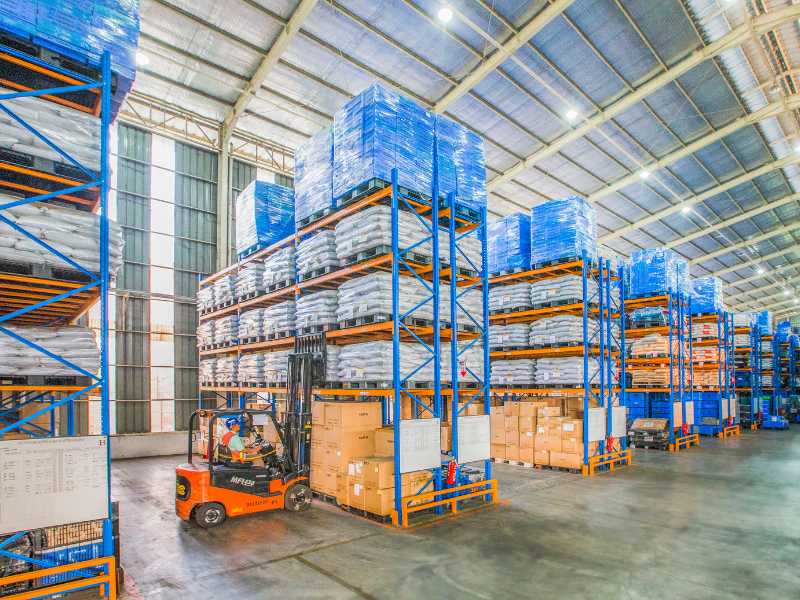 Clients who need temperature-controlled environments should anticipate a higher cost. And another consideration to inquire about is whether or not the fulfillment company adds on charges during peak season when client sales will increase significantly. Some companies do, and it can add significantly to the client’s cost to be charged a fee for the busiest time of the year.
Clients who need temperature-controlled environments should anticipate a higher cost. And another consideration to inquire about is whether or not the fulfillment company adds on charges during peak season when client sales will increase significantly. Some companies do, and it can add significantly to the client’s cost to be charged a fee for the busiest time of the year.
Your best full-service fulfillment companies will not charge extra for storage space during peak season. Our example fulfillment company does not.
Onboarding is the process in which a client and fulfillment company establish a business relationship. With onboarding, clients are looking at an in-depth, detailed process that is vital to the success of the relationship. A partner relationship is what is desirable between a fulfillment company and a client.
Typically, the warehousing company will look at what is involved and charge a one-time onboarding payment based on the requirements of the client. There are quite a few processes that will need to be set up, beginning with the technology integrations, which will lay the foundation.
Other processes involve warehousing operations, client services, technology configuration, finances, and so forth. What is desirable is that each process is established to create a seamless flow. Representatives from the client’s business and the fulfillment company setup need to meet and fully discuss requirements and procedures to lay the foundation for a positive onboarding.
The warehousing cost for setup will include all of the aforementioned processes as well as training. Done properly the onboarding creates success.
First of all, packaging material is not usually included in warehousing costs. Fulfillment companies will normally stock the common sizes of standard packaging that would be specific to the needs of the client. If the client products fit efficiently into standard packaging sizes it will keep their expenses down.
Nowadays there are more and more clients who prefer to ship in biodegradable or recyclable packaging as this is preferred by the end customer. Our example fulfillment company sources ‘green’ packaging from outer cartons to inner materials.
There is also a trend of clients requiring custom packaging per their brand image. Customers of some high-end products prefer the experience of receiving their purchase in customized packaging, displaying and representing the brand. Merchants have turned to custom packaging to prevent product damage as well. So custom packaging is an option that the client may prefer for brand recognition and protection of fragile items.
In essence, fulfillment companies stock packaging including boxes and envelopes suited to the client. Some fulfillment companies, of their own accord due to environmental concerns, will purchase these items as biodegradable and recyclable. Clients will benefit when their fulfillment company uses eco-friendly packaging as the disposal of the packaging matters to the end customers.
Other forms of high-end custom packaging are used to add to the ‘buying experience’ of customers and extend the brand’s values.
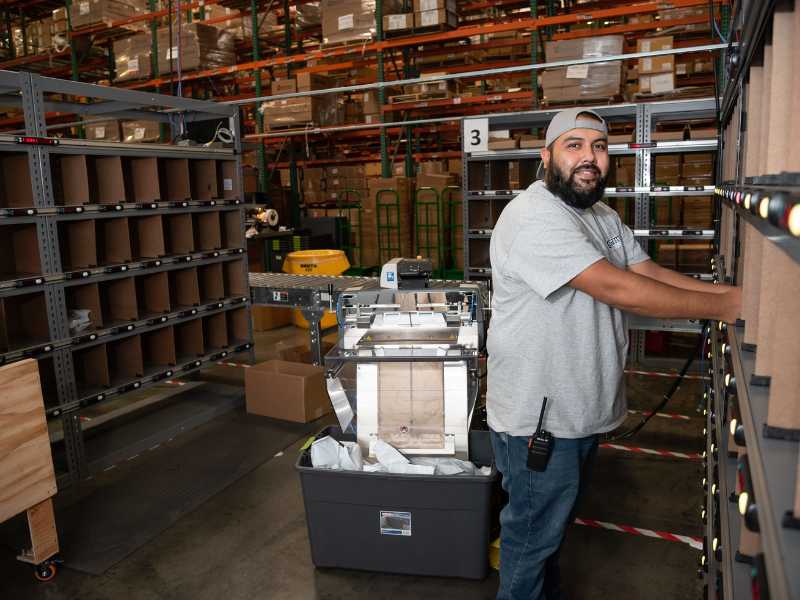 Kitting could also be called bundling – where the fulfillment company will package several of the client’s products into a custom bundled package or box. This will result in a new SKU once the products are packaged together as one product. Rates for kitting are usually quoted on a cost-per-kit basis. Assembly requires running time-motion studies for the specific assembly project.
Kitting could also be called bundling – where the fulfillment company will package several of the client’s products into a custom bundled package or box. This will result in a new SKU once the products are packaged together as one product. Rates for kitting are usually quoted on a cost-per-kit basis. Assembly requires running time-motion studies for the specific assembly project.
The fulfillment company will work with the client on how to approach these projects. If it is more cost-effective for the client to avoid the charges by pre-kitting or assembling the products then the client will take on the task. The client and fulfillment company work together as partners in making these decisions, depending on the anticipated sales and capacity of the client. The best, most economical way to handle the projects will be determined.
Picking and packing are one of the main tasks of the employees of a fulfillment company, and warehousing costs are incurred for this common task. The employee occupies a position on the warehouse assembly line picking and packing orders for their assigned clients, most likely labeling the package and forwarding it to the appropriate carrier for delivery to the customer. The fees for this task will vary depending on the requirements and specifications. What are the specifications? These will be item dimensions, item weight, SKU count, dunnage requirements, and so forth.
It makes a significant difference if the client is business-to-consumer (B2C) or business-to-business (B2B). We’ll look at warehouse pricing for B2B fulfillment first. Not all fulfillment companies will agree to handle B2B due to the order fulfillment being a much more labor-intensive and time-consuming process and as a result, B2B fulfillment orders have a different warehousing price structure.
There is more documentation involved in B2B, specific systems and processes are required, and orders have to be compliant with certain routing requirements. The B2B orders are most often palletized, and they are larger. Once again compliance requirements come into play. B2B orders simply require more time, more material handling equipment, and different order picking such as bulk/carton unit picking, full pallet pulls, and other specifications.
For this reason, fewer fulfillment companies handle B2B. Some do handle B2B but they limit the amount of B2B when serving a client that outsources both B2B and B2C.
If the order is business to consumer (B2C) it is handled differently. When it comes to B2C, the warehousing services pricing will be easier to understand and less costly. At the order and unit pick level, there will likely be standard rates in B2C per transaction. The fulfillment partner will create efficiencies that will save money for the fulfillment client.
What kind of efficiencies will be created? The fulfillment company has a process of creating waves of orders, which means they create a picking list and they arrange multiple orders in batches. This gives warehouse workers an efficient path to picking and packing based on the picking list methodology.
By batching and giving workers an efficient path, the process is sped up for the client, which saves them money concerning shipping and satisfying the customer. In addition to standard rates, the warehouse pricing will be straightforward.
To review, B2C and B2B orders have different warehouse pricing and a much different process. Some fulfillment companies limit the B2B clients or restrict how much B2B omnichannel fulfillment they will do. Our example fulfillment company does not have restrictions on B2B.
Outbound shipping will often be the largest warehousing cost on a client’s monthly invoice, and it can be one of the ways clients save the most money by outsourcing. Most fulfillment companies will use rate shopping technology to determine the lowest-cost shipping method that meets a client’s goal for days in transit.
Clients utilize a fulfillment shipping provider to save on warehouse shipping costs due to the fulfillment provider’s advantages of being able to negotiate outbound shipping fees with carriers that are heavily utilized.
Savings on shipping costs is one of the biggest warehousing cost advantages of outsourcing order fulfillment. Shipping charges are based on the service level of a packed order along with the size, the weight, the carrier, and the destination. A fulfillment company will select the most cost-efficient carrier rates. The more they ship, the bigger the discounted rates.
Carriers calculate shipping pricing on the greater of actual vs. dimensional weight. Dimensional weight formulas can be managed easily through rate-shopping software. The fulfillment client can safely assume that the smallest box and lightest weight box will have significantly lower shipping costs.
All incidentals associated with managing a client’s account will be considered warehouse expenses and will typically be added to the monthly invoice as a flat fee. This warehousing services pricing will cover handling customer service inquiries, handling special operational projects, setting up new order channels, retail routing for business to business, and any other warehousing services performed to keep the account functioning smoothly.
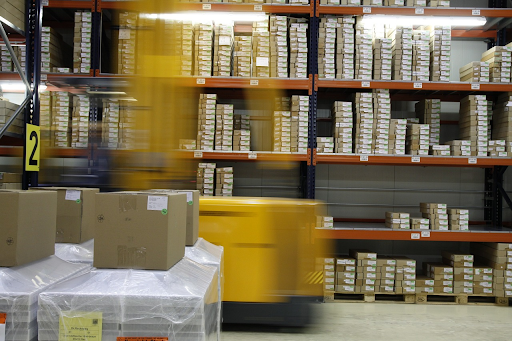 Returns are a reality and one that fulfillment clients consider negative work. The management of returns is usually an add-on to the warehousing rates and can be billed hourly or per unit. In some cases, fulfillment companies can minimize the costs associated with returns and get the inventory back onto the shelf as shippable finished goods for those items that can be refurbished.
Returns are a reality and one that fulfillment clients consider negative work. The management of returns is usually an add-on to the warehousing rates and can be billed hourly or per unit. In some cases, fulfillment companies can minimize the costs associated with returns and get the inventory back onto the shelf as shippable finished goods for those items that can be refurbished.
Returns management is also called reverse logistics. The customer wishes to return a purchased product so the carriers return the package to the fulfillment company. The fulfillment company gets the return registered in the system, data communicated back to the client, and the product back on the shelf and ready to sell. Or if the product is damaged and cannot be resold, the fulfillment company will set it aside for other options.
Returns fall into three categories:
Consumer returns will be where customers expect credit on their orders. In retail returns, clients will seek to clean up the books before the month’s end. The fulfillment company will create solutions for each client, connect with their technology platform, get the return registered in the system, get the product back on the shelf and ready to be sold, or they will set it aside for donation, utilize other sales options as preferred by the client, recycle the product or destroy as indicated by the client.
As previously stated, warehousing costs for reverse logistics services will be an add-on to the fulfillment costs and the fulfillment company can significantly reduce these costs with the right technology and teams that are trained in handling returns. Every client will have specific needs and the warehouse pricing will of course depend upon the client’s needs.
Whether the returned product needs testing, repacking, replacing components, or handling a broken seal – whatever the storage and handling cost, the fulfillment company will work to diminish the cost and satisfy the customer. Warehousing costs concerning returns management are for the most part customized to the client, so the quality, integrity, and partnership of the fulfillment company are vitally important.
These nine areas of service that we have listed, from setup to account management to returns will hopefully help in understanding warehousing costs. And there are a few more questions that will apply to storage and handling costs for you to factor in:
Where are your customers located? Does the fulfillment company have multiple warehouse locations that might benefit from reducing shipping time? – that question may or may not apply, but it is worth considering. Our example 3PL has fulfillment centers on both coasts, near ports. Does your company do international shipping? Keep in mind that not all fulfillment companies support international shipping. Our example 3PL does.
What shipping options matter to you? Would you prefer to give your customers free or two-day shipping? Some of these options might be simpler if you work with a high-quality 3PL because you will have more shipping options available to you.
How much inventory does the company have and what will be the warehouse storage cost? If the company stores all of its inventory in-house for fulfillment, it may want to compare the prices if the fulfillment services company provides storage.
Customization, special handling, and special packaging are provided by full-service fulfillment companies. Warehouse handling charges should be compared with customization in-house.
A vitally important question is… can your current technology be integrated with the types of warehousing costs and services you need? This is essential for a fulfilled order because, if everything is easily and fully connected the fulfillment process can start automatically. Finding a fulfillment specialist who fits your warehousing cost needs is essential for a positive order fulfillment process.
To summarize, when doing warehousing costs accounting, the company will look at the sum of all the expenses involved in the course of handling products from receiving to distribution. We identified nine areas where costs are incurred, some being standard fee-based, others being customized depending on the task.
We looked at warehouse fees for receiving, the fulfillment company’s storage costs, the company’s charges for onboarding, the warehousing costs of materials, the cost of warehouse kitting and assembly, the charges for picking and packing, the warehouse expenses for outbound shipping, the cost of customer support and finally, the charges for handling returns.
Onboarding is usually a one-time payment, materials are not usually charged as warehousing cost, kitting is usually a cost-per-kit, warehousing fees for picking and packing will vary depending on the client’s requirements, for shipping the fulfillment company will use rate shopping technology to determine the lowest-cost shipping method, customer support will likely be a flat fee, returns will be an add-on billed hourly.
What this tells us is – it depends on what the client needs, and it depends on the efficiency, technology, experience, dedication, and willingness of the fulfillment company to work with the client as a business partner.
More interesting information and a breakdown of the costs of running a warehouse have been published by Prologis where the goal is to look for common components when calculating the costs of running a warehouse. They provided statistical data and actual cost data which may be of benefit when trying to determine warehousing services pricing.
The article breaks it down into the categories of statistical data and cost data. The statistical data would include annual net sales, the number of marketing orders processed and shipped, the total number of lines ordered on the marketing orders, and the annual number of boxes shipped by the fulfillment center.
The cost data includes the cost of direct labor for all functions required to fill orders. This would include many of the tasks previously mentioned such as receiving, storage, picking and packing, shipping, and return management.
The article also mentions the total cost of indirect labor, which is any labor function not classified as direct labor, such as supervision, maintenance, clerical, and inventory. These charges are covered in our list of nine warehousing cost aspects.
They finish up with total occupancy costs, including lease amount, utilities, amortization and depreciation, conveyor and sortation equipment, and the warehouse management system.
They conclude by offering information on how to do cost calculations or warehousing cost accounting. The intention is to compare in-house fulfillment with outsourcing the fulfillment processes to a 3PL provider.
We recommend that a company considering outsourcing calculate what it costs to handle the fulfillment in-house and once that information is gathered, enter into an onboarding conversation with a full-service fulfillment company. Before you can know the cost savings it is important to know how much it currently costs to handle your own fulfillment process. We think you may be surprised at the advantages of outsourcing.
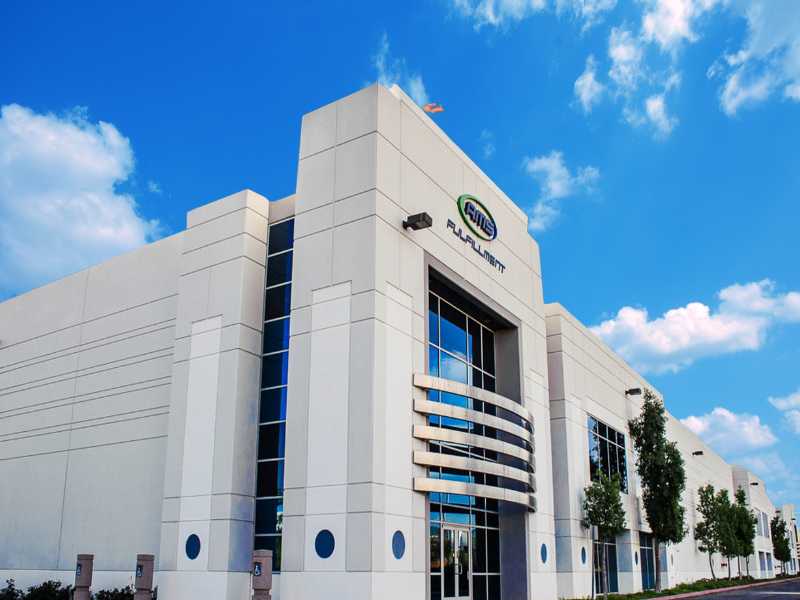 AMS Fulfillment has years of experience in providing all of the nine specialized services we covered in this article. When working with AMS, a business will have access to professionals with years of experience. We have been in business for more than 20 years and the company is outstanding concerning:
AMS Fulfillment has years of experience in providing all of the nine specialized services we covered in this article. When working with AMS, a business will have access to professionals with years of experience. We have been in business for more than 20 years and the company is outstanding concerning:
AMS Fulfillment is a bi-coastal full-service 3PL and partner to the clients they serve. We are also a Certified B Corporation. When AMS is your choice, you are choosing a partner focused upon environmental sustainability; diversity, equity, and inclusion in hiring and promotion; free college-level education and substantial benefits for employees; concern and care for the communities in which we exist; and transparency, integrity, and ‘extra mile’ in our service to clients.
If you need a high-quality 3PL, we invite you to look into our fulfillment services. Now… what, exactly, does it mean to be a Certified B Corporation?
A B Corporation is a for-profit company dedicated to using business as a force for good. Consumers are increasingly concerned with reducing the environmental impact, recycling, and biodegradable packaging and they do prefer companies that make efforts to go green.
As a fulfillment company, AMS is in a unique position of success in going green by choosing packaging materials and box sizes that are earth friendly and, of course, by recycling all that we can. Reducing the use and volume of harmful waste generated through material selection, production process or product design is best for our planet — and something we encourage our clients to follow.
The AMS purchasing department has created a catalog for client use, outlining available recyclable or biodegradable packaging. Clients truly care about their brand, and they care about satisfying customers. Outsourcing to an environmentally responsible fulfillment company is becoming a big plus concerning customers, and AMS Fulfillment is proud to provide the option of a ‘green’ fulfillment company to clients.
And finally, concerning being one of AMS’ client partners, the company is focused on client success. We know from experience that when our clients succeed, we succeed. AMS is exceptional when it comes to warehouse cost management and once again, we invite you to Contact Us about any needs you may have. We are a true partner to our clients.